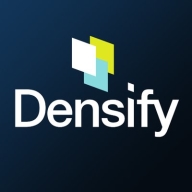

BMC Cloud Lifecycle Management and Densify are competing in the cloud management space. BMC is favored for its pricing and support, appealing to budget-conscious buyers, while Densify stands out with advanced features, justifying its higher price for those prioritizing a feature-rich solution.
Features: BMC Cloud Lifecycle Management offers comprehensive automation capabilities across multiple cloud platforms, asset management, and provisioning. Densify provides sophisticated analytics for cost optimization, resource utilization, and advanced predictive modeling for efficient resource allocation.
Room for Improvement: BMC could enhance its analytics features, improve integration with third-party tools, and offer more sophisticated cost management capabilities. Densify may work on simplifying its complex setup process, expanding its training resources, and offering more competitive pricing options for smaller enterprises.
Ease of Deployment and Customer Service: BMC Cloud Lifecycle Management is recognized for its straightforward deployment and robust customer service. Densify, although more challenging to deploy, provides specialized support to navigate its comprehensive features.
Pricing and ROI: BMC Cloud Lifecycle Management generally offers lower setup costs and favorable support pricing, contributing to immediate ROI. Densify's higher initial costs are balanced by potential long-term savings from efficient resource management, appealing to organizations focusing on strategic resource deployment.
| Product | Market Share (%) |
|---|---|
| Densify | 0.9% |
| BMC Cloud Lifecycle Management | 0.9% |
| Other | 98.2% |

| Company Size | Count |
|---|---|
| Small Business | 1 |
| Midsize Enterprise | 1 |
| Large Enterprise | 9 |
BMC's cloud management platform drives digital innovation with agile, full-stack service provisioning across cloud and traditional platforms. BMC Cloud Lifecycle Management scales easily while integrating with essential compliance and governance policies to reduce risk.
Densify is a hybrid cloud and container resource management platform that makes workloads self-aware of their precise resource requirements and automates the resource management and selection process. This solution helps you control your cloud spend and also helps your apps perform and scale better. Densify enables you to match your cloud requirements with the optimal cloud supply. Additionally, Densify is the only technology that leverages patented, predictive machine learning-powered analytics to perform advanced modeling of workload patterns, and provide precise optimization directives. It is ideal for cloud engineers, container platform owners, and IT finance.
Densify works by:
Densify Features
Densify has many valuable key features. Some of the most useful ones include:
Densify Benefits
There are many benefits to implementing Densify. Some of the biggest advantages the solution offers include:
We monitor all Cloud Management reviews to prevent fraudulent reviews and keep review quality high. We do not post reviews by company employees or direct competitors. We validate each review for authenticity via cross-reference with LinkedIn, and personal follow-up with the reviewer when necessary.